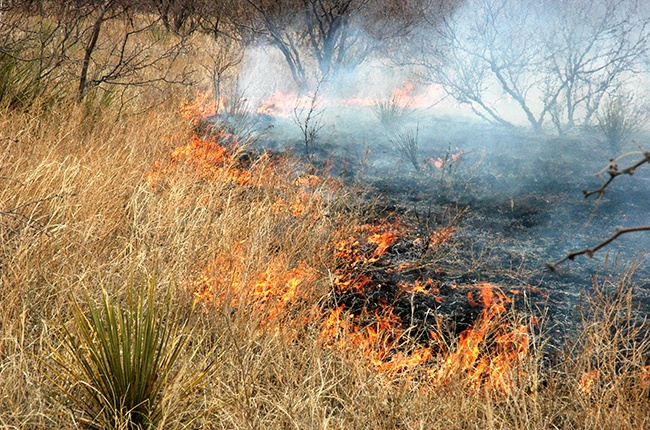High winds and drying grass and brush should prompt homeowners and landowners alike to take time to prepare before wildfires spark across the state, said a Texas A&M AgriLife Extension Service specialist.
“Folks might think the recent rains will keep things from burning, but these winds will dry things out very quickly,” said Dr. Ted McCollum, AgriLife Extension beef cattle specialist in Amarillo.
“It might even be time to get the mower out to knock down any dry grass around homes and outbuildings, and ranchers will need to be checking their water supplies and fire suppression equipment,” McCollum said.
The National Weather Service has issued a number of fire danger warnings for regions of the state due to high winds and low humidity, stating “outdoor burning and activities that cause open sparks or flames are discouraged….weather conditions will be favorable for the development of large grass fires.”
McCollum said conditions are right for wildfires to start with any ignition source if the available fuel is dry and the winds are high in the coming weeks. Primary ignition sources include motorists who throw cigarettes out along the highway or drag chains that cause sparks, and swinging electrical lines.
Ranchers and landowners bordering any roadway, particularly, need to tend to fire breaks along fence lines and check water tanks and other firefighting equipment to make sure they are in working order, he said.
Some other specific precautions homeowners and landowners can take now are:
– Develop an escape or evacuation plan. The evacuation plan should include how to transport animals and livestock that may be in danger.
– Place fire extinguishers in all barns, vehicles and tractors. Check extinguishers periodically for charge. Discard damaged or used fire extinguishers.
– Keep barns and buildings clean of trash and other combustible materials such as hay, lumber and empty feed sacks. Keep outside areas clear of high grass, weeds and other debris.
– Make sure your farm has an adequate water supply, such as an irrigation ditch, water tank or pond.
– Park tractors and implements away from combustible materials such as hay stacks and fuel storage containers.
– Keep aboveground fuel storage tanks at least 40 feet from buildings.
McCollum said when the higher winds start whipping power lines and electrical sources above heavy growths of grass and brush, conditions are such that any spark could start a wildfire. Any locations where an electrical source is present, such as oil and gas well pumps, should be checked to ensure the lines cannot swing into contact with one another and create a spark, he said.
For a complete list of wildfire-related documents concerning preparation, mitigation and recovery, go to: http://texashelp.tamu.edu/004-natural/fires.php.
Writer: Kay Ledbetter, 806-677-5608, skledbetter@ag.tamu.edu
Contact: Dr. Ted McCollum, 806-677-5600, ft-mccollum@tamu.edu
This story was originally posted on AgriLife Today.





